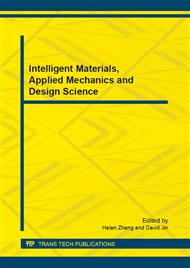[1]
K. A Khor and Y. Li. Mater. Lett., 2001, 48, 57– 63.
Google Scholar
[2]
C. Duran and Y. K Tür. Mater. Lett., 2005, 59, 245– 249.
Google Scholar
[3]
H. Schneider, J. Schreuer and B. Hildmann. J. Euro. Ceram. Soc., 2008, 28, 329– 44.
Google Scholar
[4]
R. Torrecillas, G. Fantozzi, S. Aza and J. S. Moya. Acta. Mater., 1997, 45, 897–906.
DOI: 10.1016/s1359-6454(96)00226-1
Google Scholar
[5]
K. A Khor, L. G Yu, Y. Li, Z. L Dong and Z. A Munir. Mater. Sci. Eng. A., 2003, 339, 286–296.
Google Scholar
[6]
C. Duran and Y. K Tür. J. Mater. Sci., 2006, 41, 3303–3313.
Google Scholar
[7]
R. H Hannink, P. M Kelly and B. C Muddle. J. Am. Ceram. Soc., 2000, 83, 461–487.
Google Scholar
[8]
K. Das, B. Mukherjee and G. Banerjee. J. Euro. Ceram. Soc., 1998, 18, 1771–1777.
Google Scholar
[9]
L. B Garrido and E. F Aglietti. Mater. Sci. Eng. A., 2004, 369, 250–257.
Google Scholar
[10]
X. H Jin, L. Gao, Y. M Kan, Y. R Chen and Q. M Yuan. Mater. Lett., 2002, 52, 10–13.
Google Scholar
[11]
J. Wang, H. M Kou, X. J. Liu, Y. B Pan and J. K Guo. Ceram. Int., 2007, 33, 719– 722.
Google Scholar
[12]
C. Oztürk and Y. KTür. J. Euro. Ceram. Soc., 2007, 27, 1463–1467.
Google Scholar
[13]
S. Maitra, N. Rahamaa, A. R Sarka and A. Tarafdar. Ceram. Int., 2006, 32, 201−206.
Google Scholar
[14]
J. M Rincon, J. S Mova and M. E Melo. Trans. Br. Ceram. Soc., 1986, 85, 201– 206.
Google Scholar
[15]
T. S Zhang, L. B Kong, Z. H Du, J. Ma and S. Li. J. Alloys. and Compd., 2010, 506, 777– 783.
Google Scholar
[16]
P. Pena, J. S Moya and E. Cardinal. J. Mater. Sci. Lett., 1983, 2, 772– 774.
Google Scholar
[17]
S. Lathabai, D. G Hay, F. Wagner and N. Claussen. J. Am. Ceram. Soc., 1996, 79, 248– 256.
Google Scholar
[18]
S. Maitra, S. Pal, S. Nath, A. Pandey and R. Lodha. Ceram. Int., 2002, 28, 819– 826.
Google Scholar
[19]
S. Maitra, A. Rahaman, A. Sarkar and A. Tarafdar. Ceram. Int., 2006, 32, 201– 206.
Google Scholar
[20]
X. P Tan, S. Q Liang, G. W Zhang, D. K Guan and L. Y Chai. Phase. transit., 2011, 84, 157–166.
Google Scholar
[21]
C. B. Ponton and R. D. Rawlings. Mater. Sci. Tech., 1989, 5, 865– 872.
Google Scholar
[22]
P. Miranzo, P. Pena, S. De Aza, J. S. Moya, J. Ma Rincon and G. Thomas. J. Mater. Sci., 1987, 22, 2987– 2992.
DOI: 10.1007/bf01086502
Google Scholar
[23]
J. B Wang and H. A Yang. Refract., 2005, 39, 411– 414.
Google Scholar


